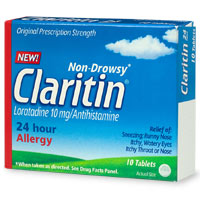1. Using a Sponge
The dirtiest room in everybody’s home is the kitchen, says Phillip Tierno, PhD, director of clinical microbiology and diagnostic immunology at the New York University Langone Medical Center and author of The Secret Life of Germs. "That’s because we deal with dead animal carcasses on our countertops and in the sink." Raw meat can carry E. coli and salmonella, among other viruses and bacteria. Most people clean their countertops and table after a meal with the one tool found in almost all kitchens: the sponge. In addition to sopping up liquids and other messes, the kitchen sponge commonly carries E. coli and fecal bacteria, as well as many other microbes. "It’s the single dirtiest thing in your kitchen, along with a dishrag," says Tierno.
Ironically, the more you attempt to clean your countertops with a sponge, the more germs you’re spreading around. "People leave growing and it becomes teaming with [millions of] bacteria, and that can make you sick and become a reservoir of other organisms that you cross-contaminate your countertops with, your refrigerator, and other appliances in the kitchen," Tierno explains.
2. Vacuuming
Conventional vacuum cleaners are intended to pick up and retain big pieces of dirt, like the dust bunnies we see floating about on our floors. But it’s the tiny dust particles that pass right through the porous vacuum bags and up into the air. So, while our floors may look cleaner after running a vacuum over them, plenty of dust, which can exacerbate allergies, remains.
"The everyday habit of cleaning with a conventional vacuum cleaner results in a burst of particles in the air and then they settle back down over the course of hours," says MacIntosh.
3. Sleeping With Pillows and a Mattress
The average person sheds about 1.5 million skin cells per hour and perspires one quart every day even while doing nothing, says Tierno. The skin cells accumulate in our pillows and mattresses and dust mites grow and settle.
If that’s not gross enough for you, Tierno explains that a mattress doubles in weight every 10 years because of the accumulation of human hair, bodily secretions, animal hair and dander, fungal mold and spores, bacteria, chemicals, dust, lint, fibers, dust mites, insect parts, and a variety of particulates, including dust mite feces. After five years, 10% of the weight of a pillow is dust mites. This is what you’re inhaling while you sleep. Is it possible that while you are sleeping, you are exacerbating your allergies????
4. Grilling Meat
So much for the summertime staple: Barbecuing meat creates the cancer-causing compounds polycyclic aromatic hydrocarbons (PAHs) and heterocyclic amines (HCAs). When fat drips from the meat onto the hot grill, catches fire, and produces smoke, PAHs form. That’s what’s contained in that delicious-looking charred mark we all look for on our burger. HCAs form when meat is cooked at a high temperature, which can occur during an indoor cooking process as well.
Wrapping meat in foil with holes poked in it allows fat to drip off, but limits the amount of fat that hits the flames and comes back onto the meat, Thus tells WebMD. Some of the excess fat can also be eliminated by first microwaving meat and choosing cuts of meat that are leaner.
5. Opening Your Windows
When the weather turns nice, many of us throw open our windows to breath in the fresh spring air. But that may be an unhealthy move, considering the combination of seasonal allergies and poor air quality of many cities throughout the U.S. According to a recent report by the American Lung Association, 60% of Americans are breathing unhealthy air. And the pollution inside our homes may be worse than outdoors. The Environmental Protection Agency lists poor indoor air quality as the fourth largest environmental threat to our country. Bacteria, molds, mildew, tobacco smoke, viruses, animal dander, house dust mites, and pollen are among the most common household pollutants.
"Pollen and mold spores that have made their way indoors will be run through the air-conditioning system and taken out of the air as they go through the duct work," MacIntosh says.
Visit Our Website For More Information: http://www.drugstoreonline1.com





